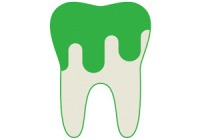
Our mouths are breeding grounds for hundreds of types of bacteria. Plaque that forms on our teeth and in our mouths contain this bacteria which also live on our gums, tongue, and other soft tissues. When we eat food, the bacteria that is in our mouth eat the food too – specifically, sugar – and produce acid. This acid begins to break down the tooth surface, and will eventually cause a hole in the tooth, referred to as dental caries, or dental decay.
Prevention is Key
Dental decay is very common, but it doesn’t need to be. With regular home care, dental decay is completely preventable. Here are a few tips to keeping the “sugar bugs” at bay.
- Brush twice a day. Brushing your teeth removes a great deal of plaque on teeth and surrounding structures. In an ideal world, we would brush our teeth after every meal, but aim for twice a day – once after breakfast and once before bed. If brushing twice a day is difficult, the nighttime brushing is more important. If left unbrushed, the bacteria will eat residual sugar left on our teeth from the day and will produce acid all night long – how gross is that?
- Floss once a day. The surfaces in between teeth, also known as the interproximal space, makes up about 40% of our total tooth surface. In other words, if we don’t clean the surfaces in between our teeth, we are missing about 40% of our tooth’s surface! Flossing is a cheap and effective way to clean this space. Not a flosser? Check out these alternatives to flossing.
- Visit your dentist regularly. Your dentist can detect a dental risk long before it becomes a dental problem. In fact, there are even some ways that your dentist may be able to help you re-mineralize cavities that are just starting with topical fluoride treatments.
- Drink tap water. Almost all water contains some amount of naturally-occurring fluoride. For the last 70 years, fluoride has been added to city water, which helps prevent dental decay in the surrounding communities. Fluoridated water is a safe, effective, and inexpensive way to combat dental decay in the US.
- Limit sugar exposure to teeth. Especially sugary drinks! Each time you take a sip of, say, soda, the acid attack lasts for 20 minutes. So, if you take a sip, go about your day, then take another sip, the acid attack can last all day. For this reason, it’s best to limit the exposure of sugar to your teeth. Be sure to eat a meal when you are enjoying a sugary drink, and use a straw. Drinking sugary liquids with a straw will help steer the drink away from your teeth. It’s also a good idea to drink the drink at once, rather than sipping throughout the day. Lastly, rinse your mouth with water after each exposure, or alternate drinks with water.
- Consider using a fluoride rinse. Some people need even more fluoride than tap water and fluoride treatments at the dental office can provide. In these cases, it may be best to use a daily fluoride rinse.






